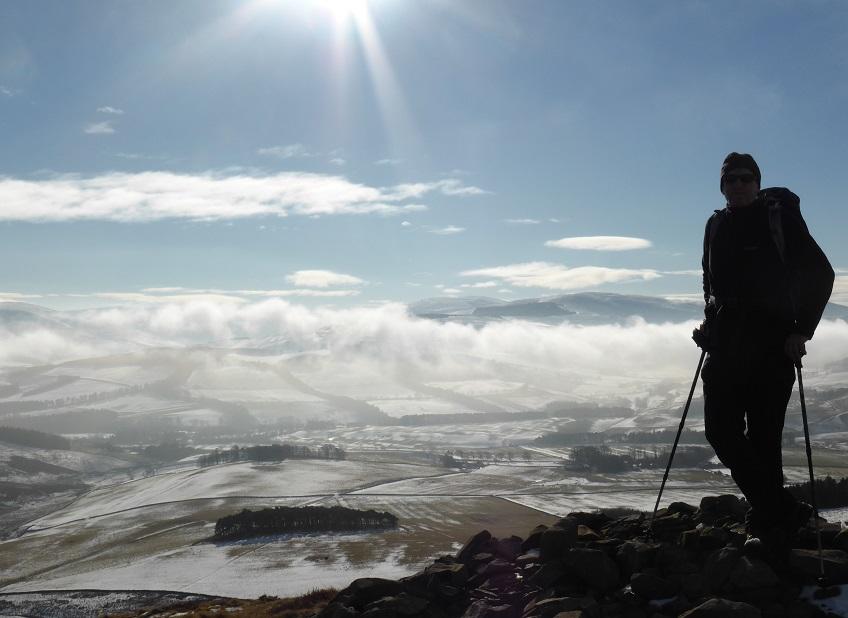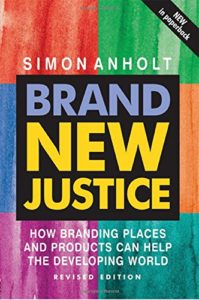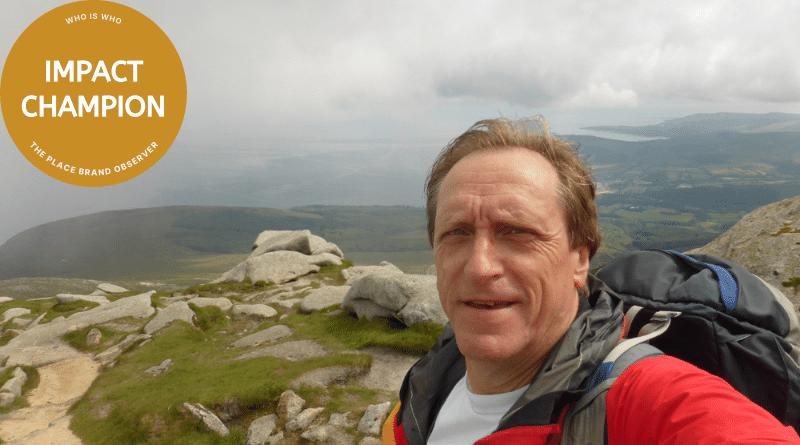Sharing insights and professional expertise is a key objective of our interview series with place branding thinkers, shakers and doers. Sometimes, the stories and experiences of our interviewees exceed our boldest hopes and expectations as editors. It so happened during our interview with Tom Buncle of Yellow Railroad destination branding consultants.
Learn about:
- How the image of a place can lead to competitive advantage;
- Why involving stakeholders from all sectors from the outset is so important;
- What it takes for destination branding to be truly successful;
- How place branding can help destinations in the developing world;
- Which are the greatest challenges for a DMO.
Tom, a few words about your current projects?
I am fortunate to work all over the world, doing something I love, which I hope also leaves a lasting legacy of improved competitiveness for my destination clients. Yellow Railroad specializes in place branding, destination marketing and management, and crisis recovery for destinations.
I also lecture at universities and business schools and speak at international conferences on place branding and global travel trends; and I write for trade journals and academic textbooks on these subjects as well.
When did you first hear about place branding, and what were your initial thoughts?
Having spent a career in tourism marketing, I was suspicious about the term ‘place’ at first, because it seemed too diffuse, unscientific, and a ‘catch-all’ for whatever anyone wanted it to mean. This view was reinforced as I came across different people using it in different ways to suit their own perceptions: town planners and architects used it in one way, destination managers in another, city centre managers in another, and development agencies in yet another.
Add in the term ‘brand’, which is also invariably used in a myriad of different ways, and the potential for confusion multiplies exponentially!
It wasn’t until I started thinking about ‘place’ from the perspective of nation branding that I really got it – how the image of a nation can contribute to its competitiveness in attracting talent, investment and tourism, as well as in export sales.
The unspoilt, natural environment of places like Scotland, New Zealand, Chile and Scandinavia imbues their natural produce, from fish to honey, meat to mineral water, and wine to whisky, with an almost magical aura that makes these products more appealing because of their provenance and heritage; and vice versa: these countries can leverage the fame of their flagship products to enhance their nation’s image on the global stage. It’s a virtuous circle.
From seeing the power of place-of-origin, it wasn’t a giant leap to understanding the power of the image of a place in attracting people to live, work, invest, do business, study and visit the place – whether at country, region, city or town level.
It just clicked for me that, when all other assets are equal – product quality, connectivity, labour skills, access to markets etc. – the image of a place can be a killer competitive advantage.
As a founder and Board member of ‘Scotland the Brand’, I was able to put this into practice. That experience taught me the importance of taking stakeholders from all sectors with you from the outset.
For place branding to be truly successful, the concept of ‘place’ needs to be clearly articulated and the benefits to each sector clearly defined.
Your most memorable moment so far as Managing Director of Yellow Railroad destination branding consultancy?
Wow, so many! Both professional and personal. Working around the world and being invited to speak at international conferences has enabled me to hike and bike the Atacama Desert, dive North Sulawesi, trek amongst Rwanda’s mountain gorillas, and climb Mount Kenya.
However, one of my most personally fulfilling professional memories is the success of the brand I helped develop for Namibia. Within a few years, Namibia’s tourism was growing at a faster rate than that of its titanic tourism neighbour, South Africa.
The brand was enthusiastically adopted by the Namibian tourism industry and others, thanks to the leadership of the Namibia Tourism Board chief executive, who grasped the brand’s potential and unequivocally espoused it.
The eye-watering moment came a couple of years later, when two Namibian tour operators thanked me at the World Travel Market in London for my work on the brand. “You were pretty much doing it anyway in your own marketing communications”, I said, to which they replied “yes, but you gave us the confidence to know what we were doing was right”.

City branding highlights: “boutique city” of Chester and “unorthodox” Bristol
Other ‘breakthrough’ moments in place branding were when we came up with the concept of the first “boutique city” for Chester and when leading stakeholders from all key sectors endorsed “unorthodox” as a driving brand value for Bristol.
The concept of ‘unorthodox’ transcended and united disparate sectors across the city powerfully and positively: it represented the long-established independence of thought and the diversity in lifestyles, cultures and opinions that characterised the city; on the other hand it also reflected a deeply-rooted spirit of innovation and creativity in business, educational and cultural life. Consequently it gave the city a strong shared platform to guide investment in public realm development and place-marketing.
Memorable for a different reason was the police roadblock I encountered while working on a brand for Cameroon. Sometimes it’s hard to be objective with a gun pointed at your chest; but it can also be a lesson in humility and encourage you to see things through other’s eyes – the first rule of marketing or, as Robert Burns put it, the ability “tae see orsels as ithers see us” (to see ourselves as others see us).
How can place branding help countries or regions ensure peace, develop prosperity and secure a sustainable future for all through tourism?
This is core to what makes me tick as a place brander: giving peace a chance, spreading prosperity and future-proofing sustainable benefits for communities. Doing a lot of work in the developing world, I see myself in the business of wealth redistribution – from visitors in developed economies who can afford to travel and spend on services and products in destinations in the developing world.
Place branding is critical to helping destinations in the developing world put themselves on the map and compete for visitors’ and investors’ attention – and dollars.
For many countries, whose economic development opportunities are constrained and resources tight, tourism is one of the quicker and least controversial ways to attract foreign exchange with limited investment.
I see this regularly in the work I do in post-conflict countries, such as Rwanda, Bosnia-Herzegovina, Serbia, and Northern Ireland.
Tourism can bridge sectarian divides and bring people together: unlike arguments over where to site a factory – in the protestant or catholic, muslim or orthodox sector – it’s hard to argue over the position of a mountain that attracts hikers. It can’t be moved; so both sides have to work together to attract visitors and split the spoils as wisely as they can.
Tourism can kick-start economic development after conflict. It can bring in foreign exchange when the domestic market is still too much in tatters to stimulate growth. As tourism grows, so too does the demand for goods and services to supply visitors, and then to supply the wider community who provide these goods and services. And, with growing prosperity, grows the chance of embedding peace and stabilising the country or city.
Therein lies the basis of long-term sustainability – making a place competitive in the international marketplace by putting it firmly on the map as somewhere worth visiting, as well as reducing the reasons for fighting because everyone has a stake in growing prosperity. And significantly, apart from news reports, which are invariably unflattering, the image of a place as a tourism destination (and especially less well-known places) is generally the most pervasive – and most positive – image of that place the world sees.
Therefore, tourism is frequently the sector that ploughs the furrow of place. Securing a sustainable future for all depends on how the place is managed and the benefits shared, which warrants a separate treatise in its own right.

Your key insights from your time as Chief Executive of the Scottish Tourist Board (now VisitScotland)?
Working with talented, committed people is not only a privilege; it makes the job so much easier. My main observations through the rear-view mirror are:
- There is nothing like pride in one’s own place – whether a country, region, city or town – to inspire people to great things. Destination leaders need to recognise this and unleash and empower the talent within their organisations.
- While NTOs and DMOs need to think like businesses, they also need to act like mountain guides – with a clear focus on where they’re going, strong leadership backed by unwavering conviction, and the ability to persuade stakeholders and politicians they are going in the right direction. The multi-stakeholder environment in which they operate requires them to secure stakeholder engagement and political understanding before they can pursue their business objectives. This is because state and local authorities still tend to be the main funding sources for NTOs and DMOs.
Retaining business focus in a politically-driven environment is one of the greatest challenges for a DMO.
To re-paraphrase Chinese military strategist, Sun Tzu’s “strategy without tactics is the slowest route to victory; tactics without strategy is the noise before defeat”: business focus without political backing is organisational suicide; political backing without business focus is the foreplay before commercial disaster.
- Leadership means horses for courses: leading from the middle of a talented team in good times, and from the front when times get tough.
- No man or woman is an island, no matter how clever or creative: listening to others’ views opens up new perspectives.
- Everyone matters: sometimes the best ideas come from the people you least expect – as long as they are motivated by the ‘moral cause’ of the organisation.
- Involving stakeholders from the outset as participants, not bystanders, in strategic planning is critical for three reasons: to obtain textured insights; to secure their buy-in to the strategy; and to ensure their commitment to implementing it.
- Market segmentation and understanding how visitors and non-visitors feel about your destination are non-negotiable. Get the right messages to the right people at the right time; and do so consistently. Understand what makes them tick, not just their demographic, and you have half a chance of competing effectively for their business; fail to get inside their heads and hearts and your marketing investment will be wasted.
- And finally, remember, no matter how great you think your place is, there are plenty of people who have never heard of it……..or who don’t have a clue what you really stand for. They could be your next growth opportunity.
Which (social) media do you follow to keep up to date on destination branding insights and initiatives?
LinkedIn is for people you know. Facebook is for people you used to know. Twitter is for people you want to know.
So, I use Twitter – for thought-leadership, insights, and trends; LinkedIn groups – for more detailed and informed discussion of branding issues; and Facebook for ad-hoc commentary.
Your favorite destination branding book at the moment?
 (Apart from the ‘Tourism Destination Branding Handbook’ I wrote for the United Nations World Tourism Organization and European Travel Commission in 2009?!).
(Apart from the ‘Tourism Destination Branding Handbook’ I wrote for the United Nations World Tourism Organization and European Travel Commission in 2009?!).
It’s still hard to beat Simon Anholt’s Brand New Justice. It is both insightful and inspiring. It deals with nation/place branding on a commercially realistic level, while injecting a sense of moral purpose, whereby developing nations can improve their economies by moving from commodity producers to branded purveyors of premium goods and services.
And it makes a compelling case for branding as a way of helping lift countries out of poverty. It is littered with enlightening examples of what’s worked and what hasn’t.
It manages to be inspiring, insightful and aspirational, while still ‘keeping it real’. It not only made me think ‘I can do this’; but it sharpened my sense of moral purpose in the work I do to help places improve their competitiveness.
Your prediction for what destination branding might look like in the future?
Destination branding will increasingly morph into place branding, as destination managers and stakeholders recognise the potential for synergy across key sectors. One day, some countries might even have a minister in charge of national image/reputation. Now wouldn’t that be a shot in the arm for their international competitiveness?!
Thank you, Tom.
Connect with Tom Buncle on LinkedIn or learn more about Yellow Railroad here.
Enjoyed our interview with Tom Buncle on destination branding and Africa? Spread the word!


